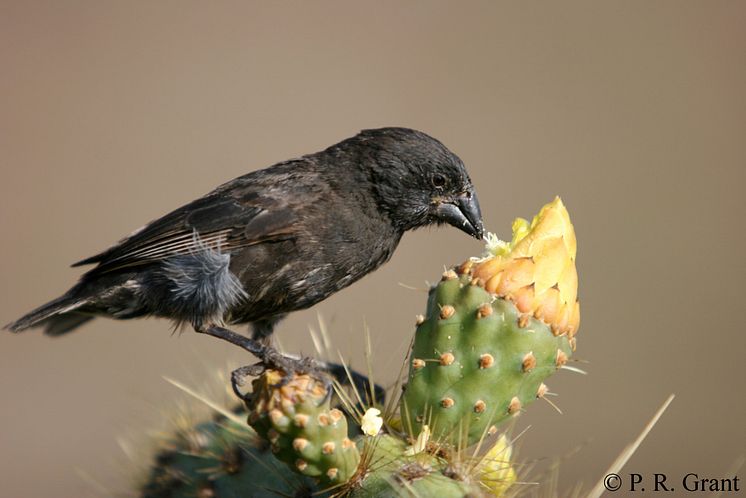
Image -
Figure 1. The medium ground finch Geospiza fortis
The medium ground finch Geospiza fortis (illustrated here) diverged in beak size from the large ground finch (Geospiza magnirostris) on Daphne Major Island, Galápagos following a severe drought. This character displacement was strongly associated with variation at a genetic locus, HMGA2, with a major effect on beak size that has facilitated the adaptive radiation of Darwin's finches.
© Peter R. Grant
- License:
- Creative Commons Attribution, no derivatives
With a Creative Commons license, you keep your copyright but allow people to copy and distribute your work provided they give you credit. You permit others to copy, distribute and transmit only unaltered copies of the work — not derivative works based on it.
- By:
- © Peter R. Grant
- File format:
- .jpg
- Size:
- 2755 x 1838, 401 KB